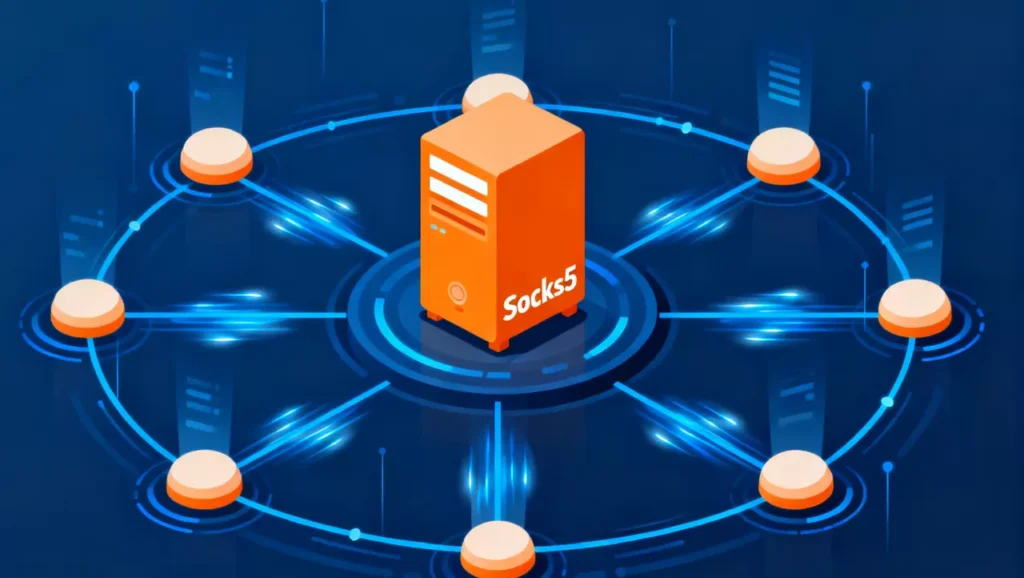If you’ve ever struggled to get your proxy connection working right — slow speeds, blocked apps, or random disconnects — you’re not alone. Setting up SOCKS5 proxies can be confusing, especially if you’re juggling multiple tools or accounts.
That’s where a SOCKS5 configurator comes in — it’s your shortcut to building a stable, private, and efficient connection that actually works.
Let’s break down what a SOCKS5 configurator is, how it helps, and how to use one like a pro.

What Exactly Is a SOCKS5 Configurator?
A SOCKS5 configurator is a tool or interface that helps you set up SOCKS5 proxy connections on your device or within specific applications (like browsers, torrent clients, or automation tools).
Instead of manually entering your IP, port, username, and password every time — which can be tedious — a configurator handles that setup process smoothly and securely.
Think of it as your proxy “control panel,” where you can:
- Manage multiple proxy profiles.
- Switch between IPs or regions quickly.
- Test connection speeds and anonymity
- And avoid common misconfigurations that break your connection
If you’re running multiple accounts for e-commerce, marketing, or data scraping, using a SOCKS5 configurator can save hours of manual setup — and protect your IP reputation along the way.
Why SOCKS5 Still Beats HTTP Proxies
You might be wondering: why SOCKS5? Isn’t HTTP proxy enough?
Here’s the deal:
- SOCKS5 supports all types of traffic (web, FTP, torrents, email, and more).
- It doesn’t rewrite headers, so your traffic remains cleaner and harder to detect.
- It enables authentication, supports UDP, and provides improved performance for complex applications.
In other words, if you’re serious about stability and privacy, SOCKS5 is the gold standard.
That’s why premium proxy services like IPFLY fully support SOCKS5 protocols across all their proxy types — including residential, static, and data center IPs. It means you can connect securely whether you’re managing social accounts, automating tasks, or bypassing geo-blocks.
How to Configure SOCKS5 Like a Pro (Step-by-Step)
Even without a fancy GUI configurator, you can still set up SOCKS5 manually — here’s the most reliable method:
- Get Your Proxy Credentials
Sign up with a trusted provider that supports SOCKS5. Avoid free proxies — they’re slow, shared by thousands, and often leak data. If you need clean, high-quality IPs, IPFLY’s SOCKS5-supported proxies are a strong choice, offering both static and rotating IPs across 190+ countries.
- Configure SOCKS5 in Your App
Depending on what you use:
- For browsers (like Chrome or Firefox): use an extension such as FoxyProxy or system proxy settings.
- For automation tools or bots: paste your IP, port, username, and password in the SOCKS5 fields.
- For torrent or scraping software: go to Connection Settings → Proxy Type → SOCKS5.
- Test Your Connection
Visit a site like “whatismyipaddress.com” — if your location and IP have changed, your SOCKS5 setup is working.
Good configurators include built-in testing tools that check connection speed, IP validity, and anonymity level automatically.
- Rotate or Manage IPs
If you use rotating proxies (especially residential ones), make sure your configurator allows IP cycling. This avoids repetitive IP usage — key for large-scale marketing, ad verification, or multi-account setups.
The Hidden Value of a Good SOCKS5 Configurator
Here’s what many users don’t realize — a configurator isn’t just about convenience. It’s about control and safety.
With a well-built SOCKS5 configurator:
- You can instantly swap regions (e.g., switch from US to UK IPs for ad testing).
- You can monitor uptime and reliability in real time.
- You reduce the risk of IP leaks or DNS exposure, since all traffic goes through a verified proxy route.
Professionals in e-commerce automation or sneaker botting often rely on this setup — one misconfigured proxy could get accounts flagged or banned. That’s why pairing a good configurator with trusted proxy infrastructure like IPFLY’s makes all the difference.
Pro Tips for Seamless SOCKS5 Configuration
- Always test before scaling – use one connection first to ensure everything’s configured correctly.
- Stick to SOCKS5, not SOCKS4 – SOCKS4 lacks authentication and is outdated.
- Avoid mixing VPNs and proxies unless you understand routing conflicts.
- Rotate IPs periodically to avoid detection or throttling on target sites.
- Use clean, non-blacklisted IP pools (that’s where IPFLY’s quality filtering really pays off).
Final Thoughts
Setting up SOCKS5 proxies doesn’t have to be a guessing game. With the right SOCKS5 configurator, you can:
- Build faster and safer connections,
- Simplify proxy management,
- And scale your operations with confidence.
If you’re tired of unreliable proxies or messy manual setups, try upgrading your infrastructure. Services like IPFLY provide SOCKS5-compatible residential and datacenter proxies with strong performance, global coverage, and easy integration — perfect for power users who value both speed and stealth.
In short, configuring SOCKS5 the right way is what separates beginners from pros. Once you’ve done it properly, you’ll never go back to basic HTTP again.


